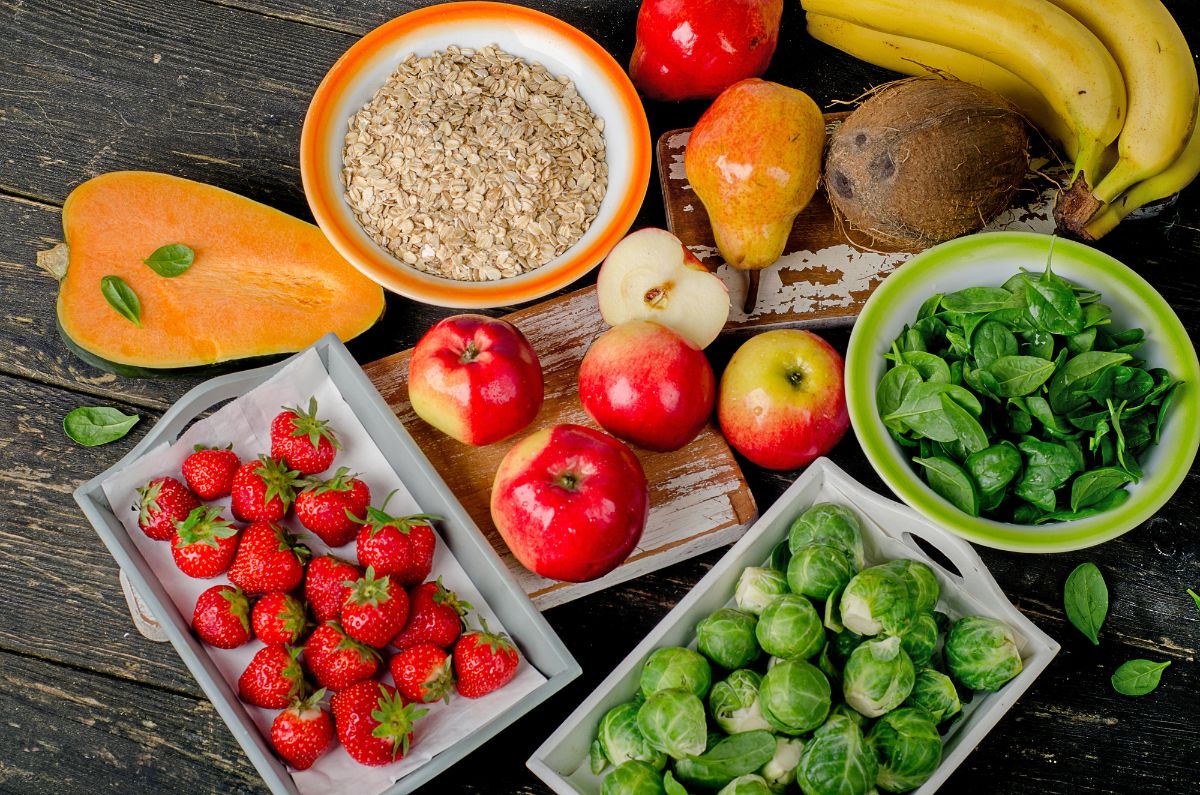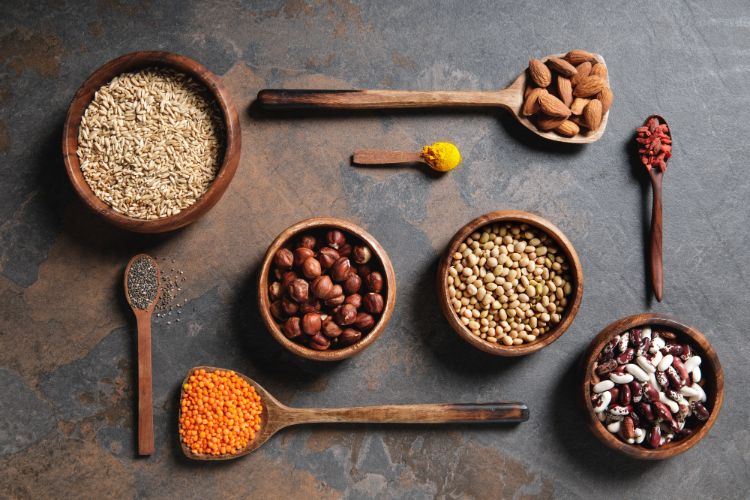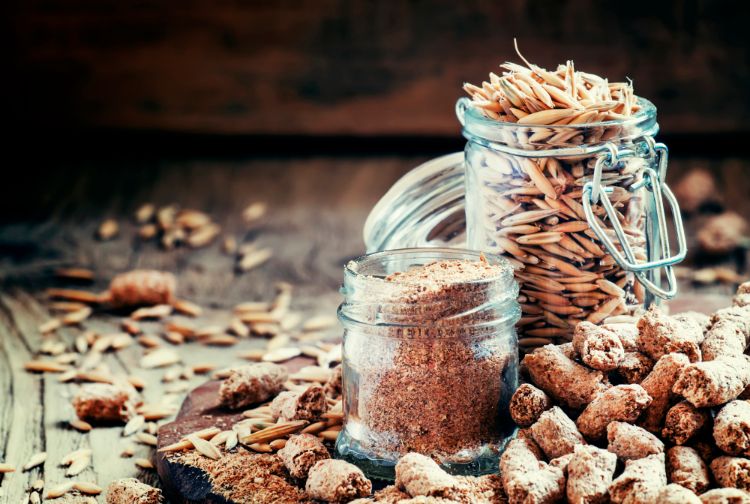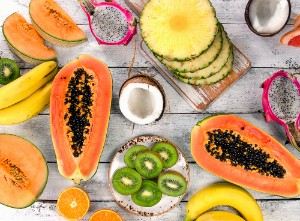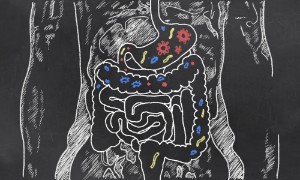What is fiber useful for weight loss and how to take it correctly
Obesity (especially abdominal) is an extremely dangerous pathology that can increase the risk of developing cardiovascular, endocrine and other diseases several times. Excessive deposition of adipose tissue is currently being considered as a pandemic of the 21st century, significantly reducing overall life expectancy.
According to nutritionists, plant-based products with a high fiber content can be useful for weight loss.
Content
Why does dietary fiber help you lose weight?
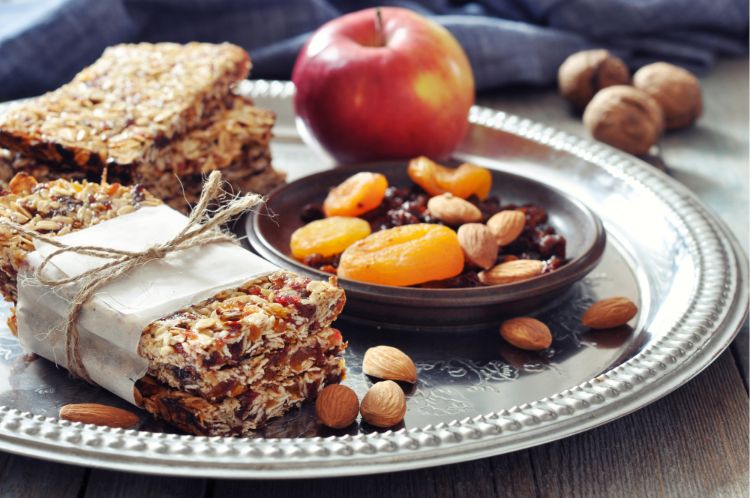
According to American experts, sufficient intake of dietary fiber (especially soluble fiber) will help get rid of excess body fat. Regular addition of this component to the diet leads to a marked decrease in abdominal and subcutaneous fat.
Dietary fibers themselves have absolutely no energy value, but they are needed by the human body to maintain the microbiocenosis of the gastrointestinal tract, normalization of digestive function and, most importantly, they contribute to weight loss (mainly due to abdominal fat deposits).
It is important to note that there are 2 main types of fiber : soluble and insoluble.
Insoluble fibers are practically ineffective in reducing body weight. But they allow you to normalize the stool, get rid of constipation.
But soluble fiber (beta-glucans, glucomannan, etc.), according to research , mixing with water in the lumen of the digestive tube, slows down the rate of absorption of nutrients from food (especially fats), which can really help you lose weight.
Weight Loss Mechanisms
There are several proven mechanisms for weight loss with regular intake of soluble fiber. Let's look at each in more detail:
- Inhibition of fat absorption. Soluble fibers create a "hydrogel" in the lumen of the digestive tract, which inhibits the absorption of fats, a number of bile acids and cholesterol. As a result, there is a decrease in the volume of fat deposits, normalization of the lipid profile. Besides, according to scientists , soluble dietary fiber not only reduces body weight, but also blocks the production of markers responsible for chronic inflammation in adipose tissue.
- An increase in the number of &171;beneficial&187; bacteria in the intestine. Recent scientific research shows that fiber intake is directly related to an increase in the number of beneficial representatives of the intestinal microflora, as well as their diversity. Scientists have identified that an adequate qualitative composition of microorganisms leads to a decrease in abdominal obesity and the risk of cardiovascular diseases.
- Slowing down the formation of fat. During the fermentation of dietary fibers, microorganisms secrete a number of short-chain fatty acids. These active substances, according to Dutch research , have a beneficial effect on energy metabolism. They increase the rate of fat utilization, as well as slow down the processes of its formation (the mechanisms of action are not fully understood).
- Decreased appetite. Soluble dietary fiber is a strong natural appetite suppressant. Satisfying hunger leads to a decrease in food intake within a few hours of taking fiber. There are many theories of the implementation of such a mechanism. According to Austrian scientists, fiber causes a reduction in the production of hunger hormones, the most important of which is ghrelin. Studies conducted in the United States , it was found that the consumption of dietary fiber increases the secretion of hormones such as peptide YY, GLP-1 and cholecystokinin. Such biologically active substances allow you to feel full. It is also important to note that fiber slows down the absorption of glucose from the digestive tract, which leads to the release of insulin at a much slower rate (this circumstance also inhibits hunger).
How much should I take per day?
According to modern scientific ideas, men need to consume from 30 to 38 g of fiber per day, women – 21-25 g.
The most optimal fiber level is determined by age and gender. Below is a table of norms for different age groups:
| Age (in years) | Amount of fiber per day (in grams) |
| 1-3 | 14 |
| 4-8 | 17-19,6 |
| 8-13 | 22,4-25,2 |
| 14-18 | 25.2 -30,8 |
Unfortunately, only about 5% of the world's population gets enough fiber.
But those who want to lose weight should take fiber correctly and not exceed the daily dose. If the norm is exceeded, a number of digestive disorders may occur, the most common of which are diarrhea or constipation, flatulence.
There are many methods of replenishing fiber deficiency (foods, powder mixtures, medicines).
According to foreign research , in order to reduce body weight, it is best to get vegetable fiber from ordinary foods.
To increase the effectiveness of the diet, it is necessary to regularly perform feasible physical exercises (about 60 minutes a day, 3-5 times a week).
High-content foods (Table)
It is extremely easy to get dietary fiber. They are found in most common foods. The brightest sources of fiber are: flaxseeds, sweet potatoes, apricots, oranges, legumes and cereals, Brussels sprouts.
It is not recommended to immediately add large amounts of fiber to the diet to avoid the appearance of undesirable effects. It is important to gradually increase the amount (by 1-3 g per day).
Below is a table of the foods most rich in fiber:
| Name | Approximate amount of soluble dietary fiber in 100 g. | Approximate percentage of the recommended daily allowance |
| Wheat bran | 44 grams | 150 % |
| Figs | 18 grams | 60 % |
| Dried apricots | 18 grams | 60 % |
| Oat bran | 15 grams | 49 % |
| Dried peaches | 15 grams | 51 % |
| Dried apples | 15 grams | 51 % |
| Buckwheat (in the form of grain) | 15 grams | 51 % |
| Soy (in the form of grain) | 14 grams | 49 % |
| Beans (in the form of grain) | 12 grams | 40 % |
| Oats (in the form of grain) | 12 grams | 40 % |
| Buckwheat | 11 grams | 36 % |
| Mash | 11 grams | 36 % |
| Rosehip | 11 grams | 36 % |
| Peas | 11 grams | 36 % |
| Pistachios | 11 grams | 36 % |
| Chickpeas | 10 grams | 33 % |
| Raisins | 10 grams | 33 % |
| Fig | 10 grams | 33 % |
| Prunes | 9 grams | 30 % |
| Peanuts | 8 grams | 27 % |
| Barley groats | 8 grams | 27 % |
| Bitter chocolate | 7 grams | 23 % |
| Almonds | 7 grams | 23 % |
| Avocado | 7 grams | 23 % |
| Feijoa | 7 grams | 23 % |
| Walnuts | 6 grams | 20 % |
| Dates | 6 grams | 20 % |
| Hazelnuts | 6 grams | 20 % |
| Fresh green peas | 6 grams | 20 % |
| Sesame | 6 grams | 20 % |
| Pasta made from grade I flour | 5 grams | 17 % |
| Sunflower Seeds | 5 grams | 17 % |
| Wheat groats | 5 grams | 17 % |
| Blackcurrant | 5 grams | 17 % |
| Parsnip | 5 grams | 17 % |
| Jerusalem Artichoke | 5 grams | 17 % |
| Brussels sprouts | 4 grams | 14 % |
| Chokeberry | 4 grams | 14 % |
| Kiwi | 4 grams | 14 % |
| Pine nuts | 4 grams | 14 % |
| Raspberry | 4 grams | 14 % |
| Semolina | 4 grams | 14 % |
| Celery Root | 3 grams | 10 % |
| Rhubarb | 3 grams | 10 % |
| Blueberries | 3 grams | 10 % |
| Rice grits | 3 grams | 10 % |
| Onion | 3 grams | 10 % |
| Blackberries | 3 grams | 10 % |
| Pear | 3 grams | 10 % |
| Greens (dill or coriander) | 3 grams | 10 % |
| Sweet corn | 3 grams | 10 % |
| Champignons | 3 grams | 10 % |
| Broccoli (cabbage) | 3 grams | 10 % |
| Oranges | 2 grams | 7 % |
| Strawberries | 2 grams | 7 % |
| Leek | 2 grams | 7 % |
| Apricots | 2 grams | 7 % |
| Redheads (mushrooms) | 2 grams | 7 % |
| Peaches | 2 grams | 7 % |
| Ginger Root | 2 grams | 7 % |
| Cashews | 2 grams | 7 % |
| White cabbage | 2 grams | 7 % |
| Lemons | 2 grams | 7 % |
| Black radish | 2 grams | 7 % |
| Pumpkin | 2 grams | 7 % |
| Sea buckthorn | 2 grams | 7 % |
| Sunflower halva | 2 grams | 7 % |
Sample menu for the day
The menu of common common dishes is able to fully meet the needs for fiber. The main thing is to observe the qualitative and quantitative composition of food, the inclusion of all necessary nutrients (micro-, macronutrients and vitamins).
Consider one of the examples of the menu for the day:
| Meal | Product Name | Fiber content per serving |
| Breakfast | Oat flakes – 100 g. | 5 g. |
| Milk – 200 ml | ||
| Medium-sized banana | 2.6 g . | |
| Second breakfast (light) | Medium-sized apple | 4.4 g . |
| Lunch | Baked beans – 200 g. | 6.8 g . |
| Broccoli – 300 g. | 7.7 g . | |
| Afternoon tea | Potatoes, baked with peel, medium size | 3.8 g. |
| Spinach salad, seasoned with olive oil – 200 g. | 1,4 g. | |
| Salmon – 85 g. | ||
| Dinner | Low–fat yogurt - 200 ml | |
| Sliced strawberries – 200 g. | 3.3 g. | |
| Almonds – 13 g. | 1,7 g. | |
| Total fiber volume per day | 36.7 g. | |
A high-fiber diet has many advantages, which include:
- Weight loss.
- Prevention of various diseases from the digestive tract (the effects are due to the normalization of normal microflora, accelerated evacuation of feces, decreased activity of fermentation and putrefaction processes).
- Maintaining cholesterol levels (including individual fractions) and glucose within the normative values.
- Reducing the risk of fatal cardiovascular diseases. The group includes: myocardial infarction, ischemic and hemorrhagic strokes.
- Acceleration of general metabolism.
The negative side is:
- Decrease in the absorption rate of a number of vitamins and macronutrients. Therefore, it is necessary to increase the consumption of biologically active substances in order to increase their bioavailability.
- Difficulties in observing the energy value of food. Many foods containing significant amounts of fiber have high calorie content (dried fruits, individual fruits (avocados), nuts).
- The development of dyspeptic disorders. Is observed with a rapid transition from a diet low in dietary fiber to a diet rich in fiber. The most common side effects are: constipation, diarrhea, flatulence, spastic pain in the lower abdomen.
5 types of powdered fiber
One of the options for obtaining dietary fibers is to use them in dry form. There are many options for fiber in the form of powder or granules to choose from, each of which has an individual set of useful properties. Let's look at each in more detail.
1. Wheat fiber
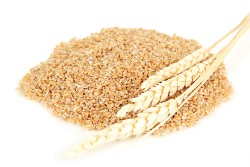 Is the most common, affordable and universal option. It is made by mixing wheat bran with fruit, berry and herbal components. It contains a sufficient amount of vitamins and minerals.
Is the most common, affordable and universal option. It is made by mixing wheat bran with fruit, berry and herbal components. It contains a sufficient amount of vitamins and minerals.
Has a positive effect on the motility and secretory activity of the digestive tract, stimulates the secretion and excretion of bile, reduces the risk of infectious and inflammatory diseases from the urinary system.
Method of application: 4 tablespoons 3 times a day. It is recommended to add it to any drink during the day. You can drink both in the morning and at night.
2. Siberian
&171;Siberian fiber&187;combines a mixture of dietary fiber with fruits, berries and cereals (the most common additives are stevia, apple and red mountain ash). Some manufacturers add nuts.
Such a "complex" has a tangible positive effect on the human body: from normalization of the gastrointestinal tract to replenishing the deficiency of almost all necessary vitamins and improving the health of the skin.
Recommendations for use: up to 5-6 times a day, diluted in drinking water yogurt , kefir or juice (2 tablespoons per 200 ml of drink). It can also be added to a protein shake or any other cocktail.
3. From milk thistle seeds
 Crushed milk thistle seeds, after pressing vegetable oil, contain a lot of fiber and are often used to normalize the gastrointestinal tract, protection of liver cells
and pancreas from various "aggressive" substances.
Crushed milk thistle seeds, after pressing vegetable oil, contain a lot of fiber and are often used to normalize the gastrointestinal tract, protection of liver cells
and pancreas from various "aggressive" substances.
They can also be used for weight loss.
Contains one of the strongest antioxidants (silymarin), which prevents the development of malignant neoplasms, slows down cell apoptosis.
Recommendations for use: 2 times a day 1 hour before meals, 1-2 tablespoons of dietary fiber should be washed down with a glass of any drink (preferably water).
4. Flaxseed Powder
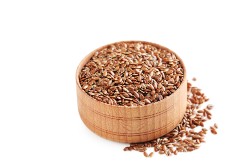 Flaxseeds are widely used in folk medicine not only to reduce weight, but also to correct glucose and total cholesterol levels in the blood.
Flaxseeds are widely used in folk medicine not only to reduce weight, but also to correct glucose and total cholesterol levels in the blood.
Against the background of taking flax seed, there is a decrease in the frequency of cardiovascular diseases and type II diabetes mellitus. Flaxseed fiber provides an extremely rapid development of a feeling of satiety, which persists for 6-8 hours.
There are several recipes for making remedies:
- The standard way. Dilute 15 g of flaxseed powder in 250 ml of kefir (with a low percentage of fat) or drinking yogurt. Drink 1-2 times a day.
- An option for fast weight loss. It is necessary to add 20 g of powder to 200 ml of kefir and let it brew for several hours. You need to arrange for yourself one fasting day and take only this drink 4 times a day for 200 ml with an interval of 4 hours.
5. Pumpkin
 Pumpkin seeds are rich in vitamin and mineral composition. They help to reduce the level of glucose and atherogenic cholesterol in the blood plasma, have an anthelmintic effect.
Pumpkin seeds are rich in vitamin and mineral composition. They help to reduce the level of glucose and atherogenic cholesterol in the blood plasma, have an anthelmintic effect.
In order to reduce the volume of fat reserves, pumpkin seed powder should be taken in this way: add 2 tablespoons to 200 ml of any liquid and take 2 times a day 60 minutes before meals.
On the effectiveness of pharmaceutical preparations
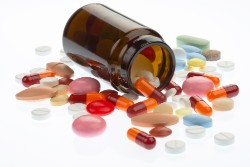 If there are certain contraindications to the consumption of fiber in the form of food, it is possible to take pharmaceutical preparations.
If there are certain contraindications to the consumption of fiber in the form of food, it is possible to take pharmaceutical preparations.
Medications (usually in the form of tablets or capsules) enter the stomach, swell and perform functions similar to fiber.
It must be borne in mind that artificially created analogues, in most cases, will be inferior to natural food products.
Currently, several drug options are available from the pharmacy, which contain substances such as: inulin ("Inulin-prebiotic"), psyllium ("Psyllium, leaf peel fiber 500 mg in capsules") and glucomannan ("Diet formula").
Scientists from Australia and New Zealand They proved it that the consumption of psyllium (from 6 g per day) for 6 weeks improves the distribution of fat in the body, reduces the level of low-density lipoproteins by 6-7%. At the same time, none of the study participants (45 people) had a single side effect.
Such a viscous fiber as glucomannan is also showed positive results in terms of weight loss. The dietary supplement helps to reduce the severity of abdominal obesity (the effect is most pronounced in the male half of humanity).
Experts from the UK have found that inulin has the most pronounced effect in the fight against obesity. It not only helps to reduce body weight, but also normalizes the metabolism of glucose, insulin and cholesterol in the body, prevents the development of pathologies such as atherosclerosis and type II diabetes mellitus.
Conclusion
Eating foods rich in soluble fiber is an effective way to lose weight. It has been proven that soluble dietary fiber not only helps to lose weight, but also contributes to the normalization of the gastrointestinal tract, restores adequate microflora, and reduces the risk of death from cardiovascular and endocrine diseases. Fiber intake should be approached competently: carefully observe the dosage according to age and sexual needs, observe the qualitative and quantitative composition of the diet as a whole.
